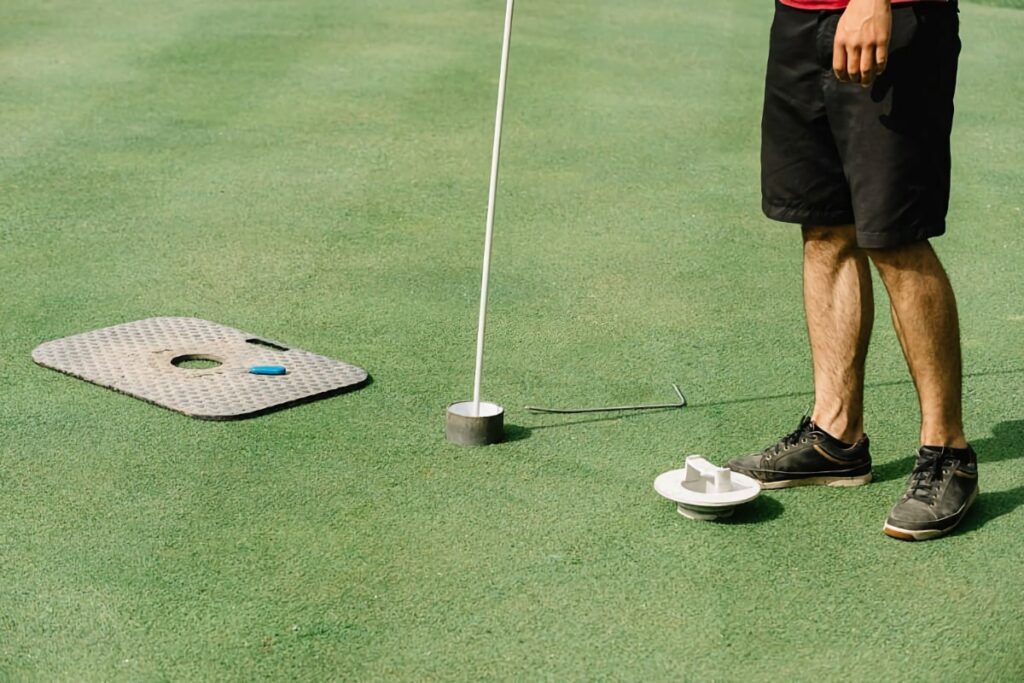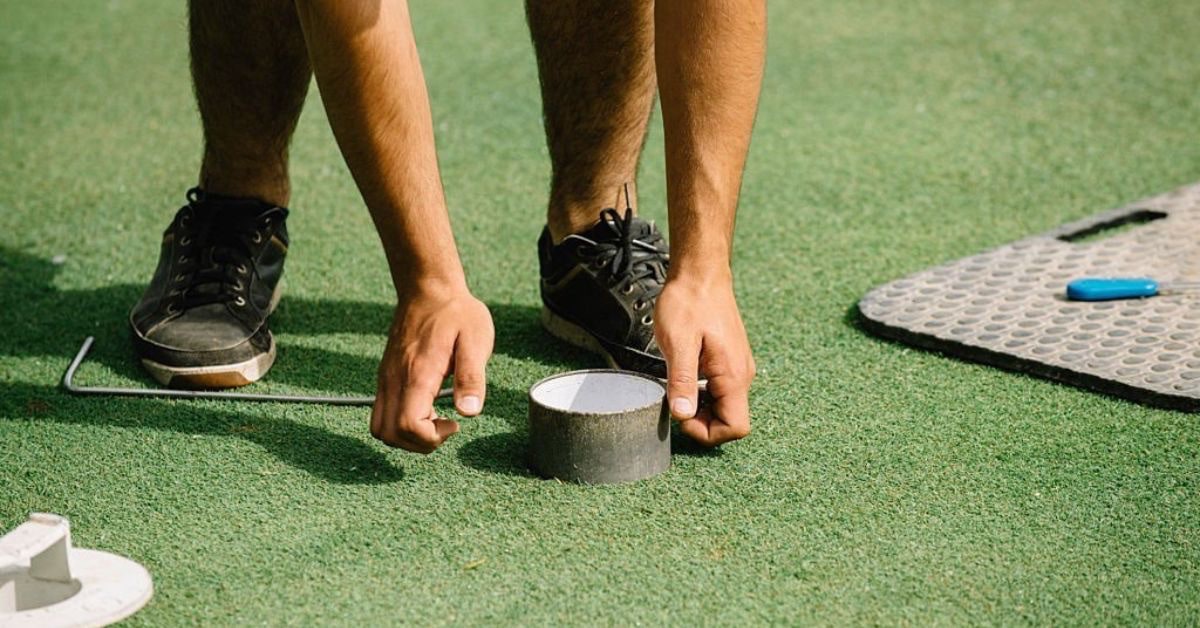Recently, I played a nice approach shot into a par 3. Stepping onto the green, I found my ball resting on an old hole plug — days earlier, I’d have celebrated a hole-in-one!
Commonly, golf courses will mix up the hole location to spread foot traffic on the putting surface, preventing wear. The variety also creates a unique and dynamic challenge.
So, how often do golf courses change hole locations?
In this article, you’ll learn how frequently golf course maintenance teams will switch up the hole location, and the step-by-step process to do it efficiently.
Ready? Let’s crack on.
How Often Do Golf Courses Change Hole Locations?
During peak season, golf courses change hole locations daily. This prevents foot traffic from overly concentrating on one area while adding variety to how the hole plays. It’s less common to change the hole locations on practice greens every day, despite the levels of traffic they receive.
However, the frequency depends on a number of factors, including course maintenance budgets, geographical variables, and the time of year.
For instance, in the winter months, holes are cut much less frequently. This is mainly because the volume of play is reduced, with less foot traffic and overall turf wear.

Why Do Golf Courses Change Hole Locations?
There are two main reasons to frequently change hole location:
- It prevents excessive turf wear
- It adds variety to how the hole plays
On the putting green, the turf is cut very short which makes it sensitive to heavy foot traffic. If the hole is left in the same location for too long, the turf surrounding the hole is likely to show signs of wear — with potential long-term damage.
Frequently switching up the hole location prevents foot traffic from concentrating on one area, keeping the surface healthy, smooth, and visually attractive.
With larger putting greens, there is more scope to vary the hole location. Conversely, smaller greens have less space and will require more intensive maintenance — such as green aeration — to keep the turf in the best shape possible.
It also adds variety to the course. By changing hole locations, you slightly alter the difficulty of the hole which keeps things fresh and unpredictable.
For instance, one day the hole might be positioned in the center of the green. But on another day, it may be tucked behind a bunker. Both hole locations pose a different challenge, which makes any course interesting even when played regularly.

Golf Hole Location Rules
When deciding where to position the hole, golf clubs are advised to follow the guidelines set out by the USGA Handicap Manual.
Rule 15.3 outlines two main factors affecting hole location:
- Proximity to the edge of the hole
- Physical qualities of the green
Firstly, greenskeepers should position holes “at least four paces from the edge of the putting green.” However, this distance should be increased if there’s a bunker near the green’s edge, or if the edge slopes downward.
This ensures that players have plenty of green to work with when putting toward the hole, without the risk of the ball falling off the green.
Secondly, the USGA suggests that at least a 2-foot radius around the hole “should be as nearly level as possible and of uniform grade.”
This means the hole shouldn’t be placed on a steep slope, upon which a missed putt from above the hole would roll a significant distance past the hole.
These guidelines keep the course fun to play — without any accusations of illegal pins!

How Do Golf Courses Change Hole Locations?
Changing hole location is a daily task for many greenskeepers, and the process is very therapeutic! Put simply, it can be broken down into four stages:
- Choose the new hole location
- Remove the cup from the old hole
- Cut and Prepare the new hole
- Fill in the Old Hole
Let’s outline each step of the process in some more detail.
1. Choose the New Hole Location
The first step of the process is to identify where to position the new hole.
Many greenskeepers use a pin chart to keep an ongoing record of pin positions for each green throughout the year. This ensures the whole green is utilized, spreading the wear.
For instance, golf course architect Jeffrey Brauer splits the green into six areas: front, middle, and back on both the left and right sides. This allows him to assign four to six potential hole locations for each section, cycling through each periodically.
2. Remove the Cup From the Old Hole
Next, use a metal hook to slide the cup out of the old hole.
This step should be fairly simple! The cup can sometimes be fitted tight, in which case it might require some twisting to remove it.
3. Cut and Prepare the New Hole
Having retrieved the cup, the next step is to cut a new hole in the fresh turf.
Using a hole cutter, push and twist into the turf. According to the USGA Rules of Golf, the depth of the hole must be 4 inches.
Once the cylinder of turf and soil is removed, place the cup into the hole and force it down with a round metal press.
PRO TIP: Fill the base of the new hole with sand until the top of the cup sits flush with the surface.
4. Fill the Old Hole
The final step is to use the fresh plug to fill in the old hole.
In some cases, you might have to dig out some soil from the base of the old hole. With trial and error, you can slot the fresh plug in so that it’s flush with the playing surface.
Check out the video below for a visual demonstration of the full process:
Conclusion
To summarise, many golf courses will change hole locations every day during the peak golf season. However, the frequency varies depending on maintenance budgets, turf conditions, and the time of year — holes are moved less often in winter.
Essentially, greenskeepers change hole locations to prevent the concentration of foot traffic in a single area on the putting green. In addition, moving the hole adds variety to the course, making it unpredictable and fun to play.
Ultimately, changing the hole location is a fundamental process in a typical golf course maintenance schedule, to keep the greens in pristine condition.


